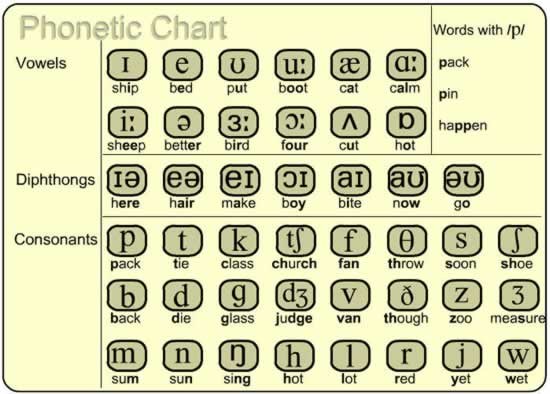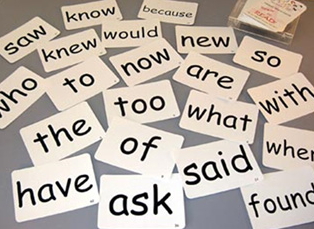Instructions
Transcription is the recording of the sound of a letter or word in the form of a sequence of special phonetic symbols. With its help, you can correctly read an unfamiliar word without outside help. When starting to study English transcription, errors in correct reading may occur. However, with practice comes skill. When transcription is used, both in reading and writing, reading rules are very important. As in Russian, so in English, not everything is read as it appears and vice versa.
The easiest way to write a transcription is to use an online service. In addition to all kinds of dictionaries on the Internet, it is also possible to transcribe words. One example of such sites is http://lingorado.com/transcription/. In a small window, just write or copy English text. A separate piece, a phrase, or a couple of words will do. After the text has been entered, click on the “show transcription” button. The transcribed version will appear below.
The service also offers several additional options. For example, the ability to choose classic English (“British”) or “American” version. In addition, you can choose the option to display the transcription: only the transcription itself, along with the entered text at one level (on one line), first the text, and below the transcription. And you can also add the options “take into account the weak position” and “transcription in Russian letters”. For maximum convenience, the application with text transcription is available in the AppStore and Google Play. On the right side of the site there are relevant links.
The ability to transcribe and read transcriptions will help when learning a language. And in such situations, a laptop with Internet access or a smartphone with an application will not always be at hand. This is how it is transcribed english alphabet: Aa [ei] - Bb [bi:] - Cc [si:] - Dd [di:] - Ee [i:] - Ff [ef] - Gg [dʒi:] - Hh [eitʃ] - Ii [ai] - Jj [dʒei] - Kk [kei] - Ll [el] - Mm [em] - Nn [en] - Oo [ou] - Pp [pi:] - Qq [kju:] - Rr [a:] - Ss [es] - Tt [ti:] - Uu [ju:] - Vv [vi:] - Ww [`dʌbl `ju:] - Xx [eks] - Yy [wai] - Zz [zed/ziː].
Vowels and consonants have their own characteristics. When a vowel sound is long, a colon is added to its designation. For example, the word "sheep" would be transcribed as follows: [ʃiːp]. A sound that is similar to the average between a and e is designated [æ] (apple - [ˈæpl]). The open sound a is indicated by a check mark [ʌ] (funny - ["fʌni]). The sound е also has its own transcription: [з] (girl -). Sounds that end in “й” are written together with “i” in the transcription: ay -, oh - [ɔi], hey -. The sound “ou” is designated [əu], ie -, ue -, ea - [ɛə].

With vowels everything is a little simpler. The Russian sound “sh” is indicated by this symbol: [ʃ]. A few more examples of non-standard sounds: “j” -, “ch” -, “zh” - [ʒ], “yu” -, “e” -, “e” -, “ya” -, “n” - [ŋ ] (usually at the end of a word, when “n” comes before “g” - “king”), the sound between s and f is [θ] (thin - [θin]), the sound between z and v is [ð] (brother -).
The peculiarity of the English language is that it has a lot of exceptions. Many people are used to learning languages according to rules, strict patterns, and even memorizing all the exceptions. However, when meeting and talking with a living native English speaker, you may be surprised, because even the pedantic British do not always follow all the rules, both grammatical and pronunciation. For them, there are established practices and patterns of speech. And about a hundred years ago, the Dutchman Gerard Nolst Trenité (1870-1946) observed the English language for a long time and was horrified by the disorder in English readings. And I decided to collect examples of such disgrace. In the end, there were 800 of them, and even in the poem, which he called “Chaos”. Even English teachers cannot always read it according to all the rules. The poem with its transcription is presented here: http://lingorado.com/english-reading-rules-chaos/.
Now you have already passed the first stage of learning English - you have learned the alphabet. You already know what the letters are called and know how to write them. But this does not mean at all that you can read any word in English correctly. In addition, you need to improve your pronunciation with the help of a professional teacher or tutor so as not to make mistakes at first.
Unlike many others foreign languages(Spanish, Portuguese, Ukrainian), where words are read the same as they are written, you just need to learn how the letters are pronounced. IN English language everything is much more complicated and confusing. But remembering the simple laws of reading words in English. Very soon you will realize that things are much simpler.
Why is it difficult to read in English?
The thing is that in English the number of sounds predominates over letters, and in order to convey them in writing, it is necessary to combine several letters in a certain order. And this is done in various ways. And the pronunciation and recording of some sounds depends on what letters surround them. And all this needs to be remembered!
To make it easier to remember letter combinations, English linguists have developed a number of rules for reading words in English. Even if you know the language well enough, it is still advisable to double-check an unfamiliar word in the dictionary, make sure of its translation and remember the transcription, that is, how it is pronounced.
At school, most teachers only briefly mention how to reproduce words in English or do not talk about them at all. They refer students to dictionaries with transcriptions, citing the fact that “there are many exceptions to the reading rules.” Protect your children from such teachers!
Yes it is. Indeed, there are many exceptions to the rules for reading words in English. But this does not mean at all that we should remain silent about them. Rather, on the contrary, first of all you need to talk about them. Still, most words follow rules.
Knowing the basic rule of how words are read correctly, it will be much more interesting and easier for you to learn the language itself. And exceptions can be remembered as they come during training, repeating the rules that these words do not so stubbornly refuse to obey.
Rule for reading words
 I think you are already eager to learn about these simple laws of reading in English. So let's get started.
I think you are already eager to learn about these simple laws of reading in English. So let's get started.
The most common letter combinations are ch and sh, which denote the sounds “soft ch” and “soft sh” (ch and sh). In international transcription they are designated by a special sign [ʃi:] and .
To remember the sound of the transcription icon for the letter combination sh, look closely at the icon and you will see that it looks like a snake standing on its tail and hissing. Or rather a sizzling one :). sh = she = [sh].
And if you use figurative creative thinking and take a closer look at the sign that in dictionaries denotes the sound of the letter combination ch, then it slightly looks like the Russian letter “ch”. Only here the “ch” needs to be pronounced very softly - much like in Russian “hours” - [chasy]. сh = chain = [ch].
Here is an example of words with such combinations:
sh and ch: she [shii] - she
chain [chain] - chain
Briefly about other letter combinations:
- Ck after short vowels - [k]: black
- Wh at the beginning or before vowels - [w]: what
- Wh before “o” - [h]: who
- Qu before vowels - : queen
- Kn at the beginning - [n]: know ["nou]
- Wr at the beginning before vowels [r]: write ["rait]
- Ee - [i]: see
- Oo - [u]: too
Of course, these are not all letter combinations, but to make it easier for you to remember them, I have compiled a convenient table that you can download, print and study in your free time in a minibus, on the subway, at a bus stop, or look into it when you encounter a problem while reading controversial situation...
Speech organs and their work
To learn how to correctly pronounce English sounds, you need to have an idea of the speech organs and know what position the speech organs occupy when pronouncing a particular sound. The oral cavity contains the tongue, palate (it separates the oral cavity from the nasal cavity), teeth and lips. Typically, the tongue is conventionally divided into the following parts: the tip of the tongue, the front of the tongue, the middle part and the back of the tongue with the root. The palate includes the alveoli (small tubercles behind the upper teeth), the hard palate, and the mobile soft palate with a small uvula.
The vocal cords are located in the larynx. When pronouncing voiceless consonant sounds, the vocal cords are not tense and spread apart. When the vocal cords are tense, the air flow causes them to move and they begin to vibrate. This is how the voice that we hear when pronouncing vowels and voiced consonants arises. Try to touch your larynx with your hand and pronounce any vowel or voiced consonant sound, and you will feel a slight vibration of the vocal cords. If you pronounce a dull consonant sound, there will be no vibration.
Vowel sounds in English. Monophthongs and diphthongs
Monophthongs- these are vowel sounds (for example, [ɔː]), during the pronunciation of which the speech apparatus maintains a certain fixed position, and the articulation does not change during the entire period of sound.
Diphthongs- These are vowel sounds (for example, ), which consist of two different elements. When pronouncing a diphthong, the speech organs occupy a position for the first element (or nucleus), and then smoothly move to the second element. The diphthong core (or first element) is longer and is pronounced more clearly. The second element is usually shorter and less loud.
Also pay attention to the length of vowel sounds in English, which is indicated by a colon in transcription. Errors in the duration of vowels often lead to a violation of the meaning. For example, ship [ʃɪp] - ship And sheep [ʃiːp] - ram.
Consonants in English
English consonant sounds, compared to Russian ones, are pronounced more energetically, with greater physical expenditure of energy. For example, when pronouncing the sound [m], the lips close more tightly than when pronouncing Russian [m]. English voiceless consonants are pronounced with a stronger exhalation than similar sounds in Russian. You should also pay attention to the fact that, unlike Russian voiced consonants, English voiced consonants are not devoiced at the end of words, since in many cases this can lead to a distortion of the meaning. For example, bad - bad And bat - bat.



